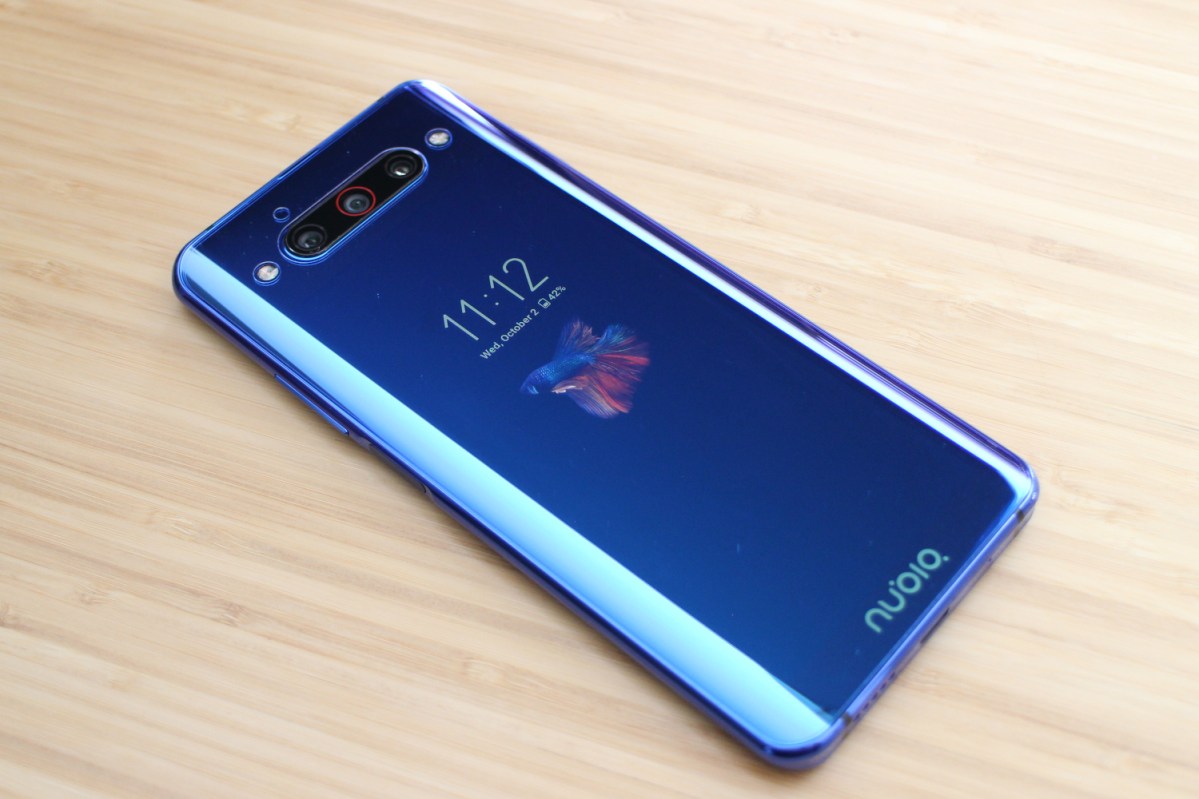If you like innovative new designs and impressive spec sheets packed into affordable devices, then you may have come across Nubia before. This Chinese brand started as a subsidiary of ZTE and it’s also behind gaming phones like the impressive Red Magic 3. Its latest is the Nubia Z20 and the headline feature is a dual display, but unlike the recently revealed Microsoft Surface Duo, the two screens in the Nubia Z20 are back to back.
There’s a regular, big display on the front and a secondary, smaller display on the back below the triple-lens camera module.
Dual-screen design
As phone manufacturers have raced to shave down those bezels and achieve an all-screen front they’ve moved from notches to smaller notches to hole-punch designs to pop-up cameras or flip-up cameras, but Nubia has an entirely different approach. The Nubia Z20 has a dual-screen design, with a main 6.42-inch, AMOLED screen and a secondary 5.1-inch AMOLED display on the back.

The main screen covers almost the entire front of the phone; there are slim bezels top and bottom and even slimmer bezels on the sides, and it gently curves at the edges. When you first look at the back, you have no reason to suspect there’s a screen lurking beneath that shiny, blue glass exterior.
Apart from the fact it looks cool, especially with an animated wallpaper of a fish swimming along, there is also a purpose to this second display — it does away with the need for a front-facing camera altogether, because you can just switch to the back screen and use the main camera to grab a selfie. We’ll dig a little bit more into the camera in a minute, but first, let’s look at the rest of the design.
The back display comes in handy as it shows the time and any incoming notifications at a glance.
The Nubia Z20 has a pleasing symmetry with gentle curves that meet in the middle. The bottom and top both have a kind of strange trench that’s pronounced enough that you can balance the phone standing up quite easily. There’s also a USB-C port on the bottom. The symmetry extends to the sides where you’ll find lozenge-shaped fingerprint sensors, which also act as power buttons, in the middle of both the left and right edges. There’s only one volume rocker, though, and it’s on the right edge.
While the Nubia Z20 is a big phone, it looks great and feels comfortable to hold, but I’ve never had a phone so prone to accidental touches. Just slipping it from my pocket and flipping it up the right way often resulted in the accidental launch of an app or service. It also supports Active Edge, or “Pressure Border” as it’s called here, like Google’s Pixel phones, but instead of only being able to activate Google Assistant, you can squeeze the sides to take a screenshot or launch an app.

The huge all-screen look of the front is exactly what you want in a phone and it works perfectly — it’s also HDR10 certified — but the smaller screen on the back is heavily tinted by the blue finish, so it can be hard to see. It’s also reflective, so if you’re outdoors or somewhere with bright lighting, it’s not easy to make out.
If you’re in the habit of putting your phone face down on the table, the back display comes in handy as it shows the time and any incoming notifications at a glance, without you have to pick it up. It’s also helpful for taking selfies, but outside of these moments, I can’t find any other reason to use it beyond visual style.
Triple-lens camera
The camera in the Nubia Z20 is a triple-lens affair with a 48-megapixel main camera with an f/1.7 aperture, flanked by an 8-megapixel telephoto lens, and a 16-megapixel ultra-wide-angle lens. It’s a versatile setup that’s similar to most popular phones, like the iPhone 11 Pro and the Galaxy S10, and it’s capable of capturing some really nice shots. There is also a portrait mode, but you can shoot with the camera in any mode when you’re taking a selfie because it’s the same main camera. The secondary screen is enough to help you line things up and get the best angle.
The telephoto lens affords you a 3x optical zoom and you can zoom all the way up to 10x digitally, though the lack of optical image stabilization, which is only in the main lens, will become apparent if you zoom in that far. The camera also has a night mode for low-light photography and there’s a pro mode if you want to really dig in and fiddle with all the settings.
While it’s not going to compete with Apple or Google, the Nubia Z20’s camera is perfectly capable and it reinforces how far cameras have come in the last few years; it’s relatively tough to buy a phone with a poor camera now.
Specs and software
The spec sheet is impressive. The Nubia Z20 boasts a Qualcomm Snapdragon 855 Plus processor, which is even faster than the regular Snapdragon 855 you’ll find in phones like the Samsung Galaxy Note 10 Plus. That’s backed by 6GB of RAM in the 128GB version and 8GB of RAM in the models with 256GB or 512GB of storage.
One obvious issue with a phone like the Nubia Z20 is battery life. While the screens aren’t designed to both run at the same time, though they can if you want to turn on cosmetic features like an animated wallpaper or gaming effects, they still inevitably require a lot of power. The 4,000mAh battery would likely be ample for the main screen, but I found it drained quite quickly when I was using the Z20 a lot and flicking between the screens.
Luckily, there is support for fast charging up to 27W, but there’s no wireless charging.

If the hardware has you excited, the software will bring you back down to earth. The Nubia Z20 runs Android 9.0 Pie with a Nubia user interface over the top. While I didn’t have any issues with performance, the software is not always intuitive and it requires the eye of a decent copy editor.
While some things are definitely lost in translation, Nubia did tell me that the software in my review unit isn’t final, so hopefully, it will improve before release. It’s functional, but if you like your software menus and core apps to be slick and polished, the Nubia Z20 is probably not the phone for you.
Price and availability
Though the Nubia Z20 is already on sale in China, the global version isn’t available until October 14. The final price has not yet been announced, but based on the price in China it looks likely to be somewhere between $500 and $600. That’s an impressive package at that price. If $500 is a hard budget for you, our current recommendation is the Asus Zenfone 6, and while the Nubia Z20 doesn’t do enough to change that, it’s an interesting and innovative device that offers good value for money.
I can definitely see other manufacturers riffing off this design in future devices, but a back-to-back display setup like this requires more thought to be truly useful.







